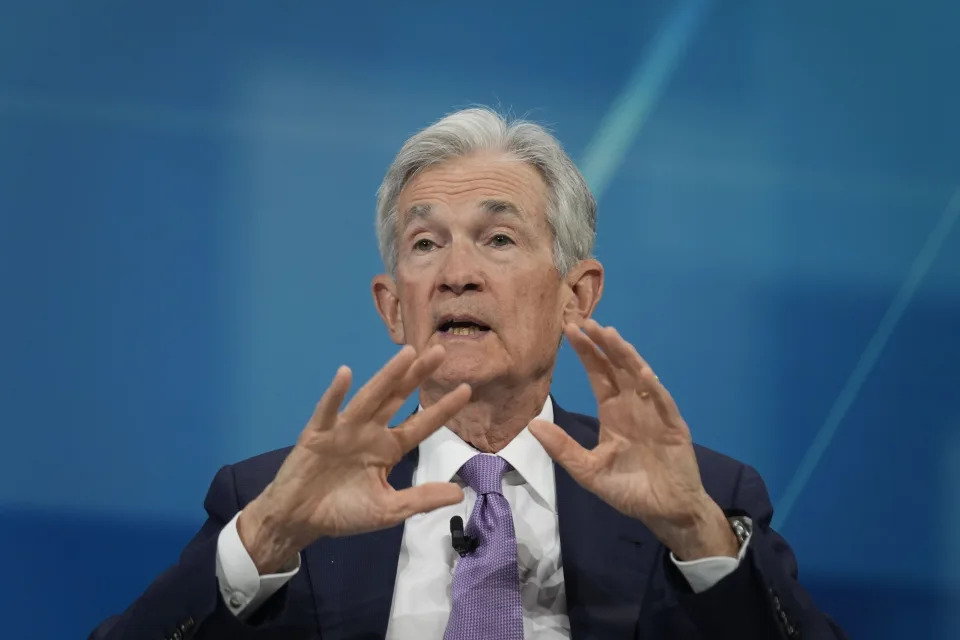Fed cuts rates by quarter point, scales back cuts for 2025
The Federal Reserve reduced interest rates by a quarter percentage point Wednesday and scaled back the number of cuts it expects to make next year.
In a split vote, the central bank voted to reduce its benchmark interest rate by 25 basis points to a new range of 4.25%-4.5%, initiating its third consecutive rate cut of 2024 despite signs that inflation isn’t entirely going away.
Newly appointed Cleveland Fed president Beth Hammack objected, preferring not to cut rates. Her dissent marked the second against a policy decision since the Fed started its latest rate-cutting cycle in September.
The consensus among Fed officials is for two rate cuts next year, down from four previously forecast in September.
"Today was a closer call but we decided it was the right call," Powell told reporters at a press conference Wednesday. "It was the best decision to foster achievement of both of our goals," referring to price stability and maximum employment.
"We see ourselves as still on track to cut" in 2025, Powell said, noting that the Fed will need to see further progress on inflation. A rate hike in 2025 "doesn’t appear to be a likely outcome."

Ten Fed officials estimated two cuts next year, three predicted one, three said three cuts, and one saw four cuts.
"In considering the extent and timing of additional adjustments to the target range for the federal funds rate, the Committee will carefully assess incoming data, the evolving outlook, and the balance of risks,” officials from the Fed's Federal Open Market Committee said in a statement.
The statement added in the phrase "extent and timing," indicating that the Fed may not continue its current trend of consecutive meeting cuts.
The language, Powell said Wednesday, does signal the Fed is "at or near" a point where it could "slow the pace of further adjustments."
Read more: How the Fed rate cut affects your bank accounts, loans, credit cards, and investments
He also acknowledged some uncertainty surrounding the effects the new policies of the Trump administration may have on the Fed’s rate path.
Some economists predict new trade, tariff, and immigration stances could be inflationary, posing new challenges for the central bank.
"We expect significant policy changes," Powell said. "We need to see what they are and what effects they have. We will have a much clearer picture" once that happens.
The Fed, he added, is "thinking about these questions" but won’t have definitive answers for some time yet.
Fed officials clearly think inflation will still be an ongoing challenge in 2025. Policymakers now see inflation as measured by the "core" Personal Consumption Expenditures index — which excludes volatile food and energy prices — ending next year at 2.5%.
That is higher than the 2.2% previously envisioned in September. Officials see inflation ending this year at 2.8%, up from 2.6% previously.
Policymakers also see the unemployment rate ticking down a tenth to 4.3% from the Fed's previous forecast of 4.4%. The unemployment rate is seen ending the year at 4.2%, down from 4.4%.
Economic growth is expected to remain roughly the same as previously forecast next year at 2.1%, up from 2.0% previously.
The new guidance from the Fed follows two developments that surprised some economists after the Fed in September cut rates for the first time since 2020, signaling an end to its most aggressive inflation-fighting campaign since the 1980s.
First, the job market did not show any new signs of weakness this fall. Second, inflation remained in a stubborn sideways holding pattern, refusing to make the final descent toward the Fed’s 2% goal .
That latest evidence came last week when inflation data from the Bureau of Labor Statistics showed that the Consumer Price Index (CPI) increased 2.7% over the prior year in November, a slight uptick from October's 2.6% annual gain in prices .
On a "core" basis, which strips out the more volatile costs of food and gas, prices in November climbed 3.3% over last year for the fourth consecutive month.
Wholesale prices also rose more than expected in November, adding to the string of sticky inflation prints.
Powell said he is satisfied with the way 2024 is ending, noting that the US economy is strong, the labor market is in solid shape, and inflation is still down significantly from where it was a year earlier.
"I think it’s pretty clear we have avoided a recession," he said, and "the path down has been better than many predicted."
Fed policy is in a "really good place. I expect another good year next year."
Correction: A previous version of this article misspelled Matt Luzzetti's name. We regret the error.

